
8. November 1939 is the name of the Johann Georg Elser Memorial in Munich to commemorate the resistance fighters fighting against the Nazis. The monument is located in the Maxvorstadt district.

8. November 1939 is the name of the Johann Georg Elser Memorial in Munich to commemorate the resistance fighters fighting against the Nazis. The monument is located in the Maxvorstadt district.
On 8 November 1939, the carpenter Johann Georg Elser perpetrated in Munich's Bürgerbräukeller with a time bomb with the intention to assassinate Adolf Hitler. The attack failed; Elser was arrested and shortly before the end of the Second World War, was killed in the Dachau concentration camp.
To prepare for the assassination Elser moved to Munich in the summer of 1939. The monument is located close to the former site of the room he had rented.

The monument was designed by artist Silke Wagner. The monument is made of aluminium and glass forming the lettering "8 November 1939". The elements are arranged in a circle in a way that represents an explosion. Every night at 21:20 (the exact time of the detonation of the bomb) the numbers are illuminated one by one until the entire script is glowing. The lights remain on for a minute before turning off again.
48°09′03″N11°34′36″E / 48.15083°N 11.57667°E

The Venlo incident, was a covert operation carried out by the German Nazi Party's Sicherheitsdienst (SD) on 9 November 1939, which resulted in the capture of two British Secret Intelligence Service agents five metres (16 ft) from the German border, on the outskirts of the Dutch city of Venlo.

Johann Georg Elser was a German worker who planned and carried out an elaborate assassination attempt on Adolf Hitler and other high-ranking Nazi leaders on 8 November 1939 at the Bürgerbräukeller in Munich. Elser constructed and placed a bomb near the platform from which Hitler was to deliver a speech. It did not kill Hitler, who left earlier than expected, but it did kill 8 people and injured 62 others. Elser was held as a prisoner for more than five years until he was executed at Dachau concentration camp less than a month before the surrender of Nazi Germany.

The Bavarian Academy of Sciences and Humanities is an independent public institution, located in Munich. It appoints scholars whose research has contributed considerably to the increase of knowledge within their subject. The general goal of the academy is the promotion of interdisciplinary encounters and contacts and the cooperation of representatives of different subjects.
The Bürgerbräukeller was a large beer hall in Munich, Germany. Opened in 1885, it was one of the largest beer halls of the Bürgerliches Brauhaus. After Bürgerliches merged with Löwenbräu in 1921, the hall was transferred to that company.

The Gasteig is a cultural center in Munich, opened in 1985, which hosts the Munich Philharmonic Orchestra. The Richard Strauss Conservatory, the Volkshochschule, and the municipal library are all located in the Gasteig. Most of the events of the Filmfest München, and many of the events of the Munich Biennale take place here.

St. Peter's Church is a Roman Catholic parish church in the inner city of Munich, southern Germany. Its 91-metre (299 ft) tower is commonly known as "Alter Peter"—Old Peter—and is emblematic of Munich. St Peter's is the oldest recorded parish church in Munich and presumably the originating point for the whole city.

Königsbronn is a municipality in the district of Heidenheim in Baden-Württemberg in southern Germany. Königsbronn (Koenigsbronn) as an administrative community also includes the villages of Itzelberg, Ochsenberg and Zang. It lies in the Brenz valley within the hills of the Swabian Jura, a landscape shaped by karst (limestone). A spring near the town center is the source of the Brenz, a tributary of the Danube.

The New Town Hall is a town hall forms the northern part of Marienplatz in Munich, Bavaria, Germany. It hosts the city government including the city council, offices of the mayors and a small portion of the administration. In 1874 the municipality had left the Old Town Hall for its new domicile.

The Trinity Church is a religious building in Munich, southern Germany. It is a votive church and was designed in Bavarian Baroque style according to plans from Giovanni Antonio Viscardi from 1711 to 1718. It is a monastery church of the Carmelites and a church of the Metropolitan parish of Our Blessed Lady. During the Second World War this was the only church in the center of Munich, which had been spared from destruction by bombs.

St. Peter is a Catholic church in Großhadern, which became part of Munich, Bavaria, Germany. It is part of the Diocese of Munich and Freising
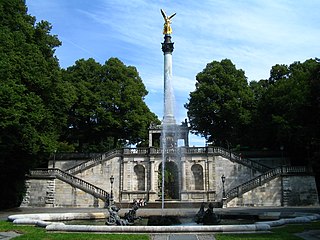
The Angel of Peace is a monument in the Bogenhausen district of Munich. The architects were Heinrich Düll, Georg Pezold and Max Heilmaier.
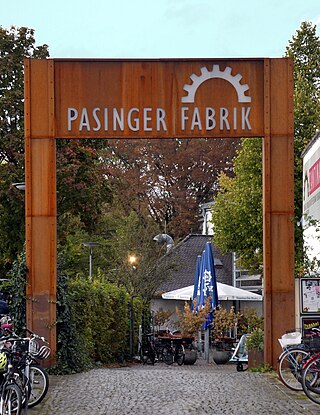
Pasinger Fabrik is a former factory in Munich, Bavaria, Germany, which is used as a cultural centre and event venue nowadays. It is located in Pasing, a quarter in the western part of Munich.

Löwenbräukeller is a beer hall and event center located in Maxvorstadt, Munich, Bavaria, Germany. It has hosted concerts by artists such as Def Leppard, Ozzy Osbourne and Kiss.

Franz Josef Huber was an SS functionary who was a police and security service official in both the Weimar Republic and Nazi Germany. Huber joined the Nazi Party in 1937 and worked closely with Gestapo chief Heinrich Müller. After the German annexation of Austria in 1938, Huber was posted to Vienna, where he was appointed chief of the Security Police (SiPo) and Gestapo for Vienna, the "Lower Danube" and "Upper Danube" regions. He was responsible for mass deportations of Jews from the area. After the war ended, Huber never served any prison time. He was employed by the West German Federal Intelligence Service from 1955–64. He died in Munich in 1975.
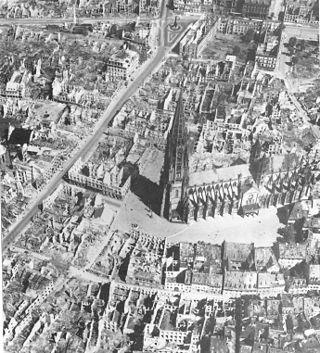
Operation Tigerfish was the military code name in World War II for the air raid on Freiburg in the evening of 27 November 1944 by the Royal Air Force with about 2,800 dead.

The Ostfriedhof is a cemetery in Munich, situated in the district of Obergiesing, established in 1821 and still in use. It contains an area of more than 30 hectares and approximately 34,700 burial plots.
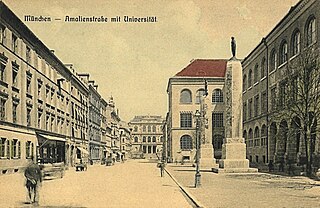
The Café Stefanie was a coffeehouse in Munich which around the 1900s till the 1920s was the leading artists' meeting place in the city, similar to the Café Größenwahn atmosphere of the Café des Westens in Berlin and the Café Griensteidl in Vienna. The cafe was located on the corner of Amalienstraße and Theresienstraße in the Maxvorstadt not far from the Simplicissimus cabaret and Die Elf Scharfrichter. At the time it was one of the few establishments in Munich which stayed open till 3:00 in the morning.
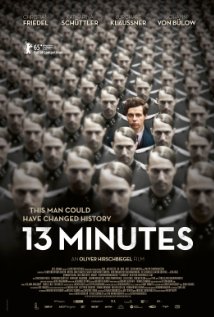
13 Minutes is a 2015 German drama film directed by Oliver Hirschbiegel that tells the true story of Georg Elser's failed attempt to assassinate Adolf Hitler in November 1939. The title of the film is drawn from the fact that Elser's bomb detonated in a venue that Hitler had left just 13 minutes before.

Adolf Hitler, the dictator of Nazi Germany, initiated World War II in Europe with the invasion of Poland in September 1939 and was central to the Holocaust. He was hated by his persecuted enemies and even by some of his own countrymen. Although attempts were made to assassinate him, none were successful. Hitler had numerous bodyguard units over the years which provided security.

Johann Georg Hiltensperger was a German history painter and a professor at the Royal Academy of Fine Arts.